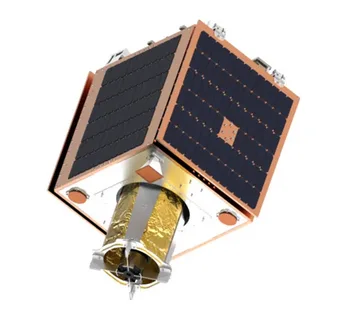Small Satellite Market: Strategies for Mitigating Space Debris and Ensuring Sustainable Orbital Environments

The small satellite market has rapidly expanded, driven by technological advancements and increasing demand for satellite services across various sectors. However, this growth brings with it significant challenges, particularly the issue of space debris. As the number of small satellites in orbit continues to rise, the risk of collisions and the accumulation of debris in Earth's orbit have become pressing concerns for stakeholders in the aerospace industry.
Understanding the Space Debris Challenge
Space debris refers to defunct satellites, spent rocket stages, and fragments from collisions and disintegration that populate the orbital environment. The increasing number of small satellites contributes to this problem, as each launch adds potential debris. The consequences of space debris are profound, posing risks to operational satellites, increasing the cost of space missions, and complicating future launches.
Market intelligence indicates that industry leaders recognize the urgency of addressing space debris. Regulatory agencies and space organizations are increasingly focused on developing guidelines and best practices to mitigate debris, ensuring that the expanding small satellite market does not compromise the sustainability of space.
Strategies for Mitigating Space Debris
To tackle the issue of space debris effectively, stakeholders in the small satellite market can implement several key strategies:
1. Design for End-of-Life
One of the most effective ways to mitigate space debris is to incorporate end-of-life strategies into satellite design from the outset. Small satellites should be equipped with propulsion systems that enable them to deorbit safely at the end of their operational life. This could involve controlled re-entry into the atmosphere, where the satellite will burn up, or maneuvering to a designated disposal orbit.
By adopting a proactive approach to end-of-life management, manufacturers can significantly reduce the likelihood of contributing to the debris population. This strategy aligns with emerging regulatory frameworks that emphasize the importance of responsible satellite design.
2. Active Debris Removal Technologies
In addition to designing satellites with end-of-life strategies, the small satellite market can benefit from the development of active debris removal technologies. These solutions involve the use of specialized spacecraft designed to capture and deorbit defunct satellites and large debris fragments.
Innovative concepts include robotic arms, nets, or harpoons that can grapple with debris and direct it to lower orbits for safe disposal. Collaborative efforts among industry players, governments, and research institutions are crucial to advancing these technologies and making them viable for operational use.
3. Collision Avoidance Systems
Implementing advanced collision avoidance systems is another strategy for mitigating the risks posed by space debris. Small satellites can be equipped with onboard sensors and algorithms that allow them to detect potential collisions with debris and execute avoidance maneuvers as necessary.
Data-sharing agreements among satellite operators can enhance situational awareness, allowing organizations to access information about the location of space debris and potential collision threats. By fostering a culture of collaboration and transparency, the industry can work together to reduce the risk of accidents in orbit.
Industry Collaboration and Regulatory Frameworks
Addressing the space debris challenge is not solely the responsibility of individual satellite operators; it requires coordinated efforts across the industry. Collaboration among various stakeholders, including satellite manufacturers, launch service providers, governmental agencies, and international organizations, is essential for developing effective debris mitigation strategies.
1. Establishing Industry Standards
The small satellite market must advocate for the establishment of industry standards that promote responsible satellite design and operational practices. These standards could encompass guidelines for debris mitigation, end-of-life disposal, and collision avoidance. By fostering a common understanding of best practices, the industry can ensure that all players are aligned in their efforts to mitigate space debris.
2. Engaging with Regulatory Bodies
Engagement with regulatory bodies is vital for shaping policies that promote sustainable practices in the small satellite market. As governments and international organizations increasingly recognize the importance of addressing space debris, industry stakeholders should actively participate in discussions and provide input on proposed regulations. This engagement can help create a balanced framework that encourages innovation while ensuring safety and sustainability in orbit.
Future Prospects for the Small Satellite Market
As the small satellite market continues to evolve, addressing the challenge of space debris will be critical to its long-term success. The demand for satellite services is expected to grow, driven by applications in telecommunications, Earth observation, and scientific research. To maintain this momentum, stakeholders must prioritize sustainability and responsible practices.
1. Investment in Sustainable Technologies
Investing in sustainable technologies will be essential for ensuring the future viability of the small satellite market. Companies that prioritize eco-friendly practices and technologies will not only comply with emerging regulations but also appeal to customers and investors increasingly focused on sustainability.
2. Innovation and Research
Continued investment in research and innovation will drive advancements in debris mitigation technologies and strategies. The collaboration between academia, industry, and government will be vital for developing new solutions that address the challenges of space debris effectively.
- Art
- Causes
- Crafts
- Dance
- Drinks
- Film
- Fitness
- Food
- Jogos
- Gardening
- Health
- Início
- Literature
- Music
- Networking
- Outro
- Party
- Religion
- Shopping
- Sports
- Theater
- Wellness


